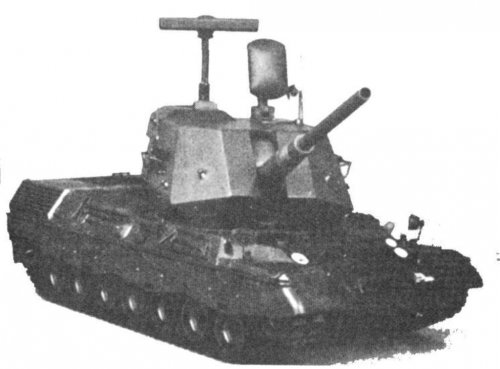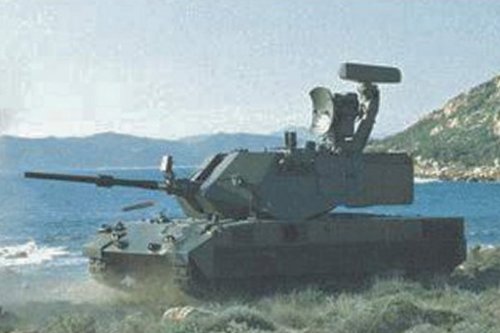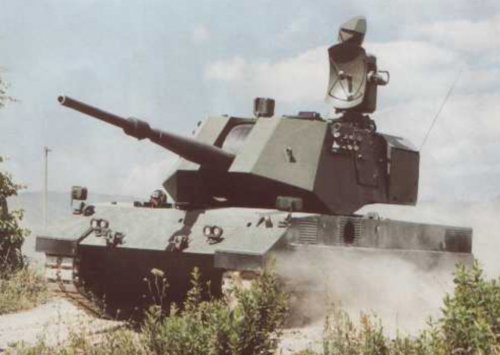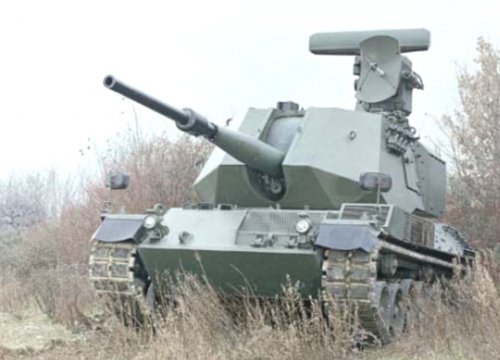I will start to report news on Italian prototypes, that although numerous, appear to be little known
We start from the family of vehicles OF-40
The OF40 is a tank that was produced in small quantities for export markets, from its platform, however, were derived means very interesting:
OF-40 Mk2/120

The OF-40/120 Mk 2A MBT is of conventional design with the driver's compartment at the front, fighting compartment in the centre and power pack at the rear. The hull and turret are of all-welded steel construction with the turret front being well sloped to provide the maximum possible ballistic protection.
The driver is seated at the front of the vehicle on the right side and has a single-piece hatch cover above his position and three periscopes for forward observation, the centre one of which can be replaced by an image intensification periscope for driving at night.
The loader is seated on the left of the turret, and has a single-piece hatch cover, with the commander being seated on the right and the gunner forward and below the tank commander. The commander has a single-piece hatch cover, a stabilised day/night image intensification roof-mounted sight and periscopes for all-round observation. He also operates the roof-mounted 7.62 mm machine gun.
The gunner's day/night sights are mounted in the forward part of the turret roof and are stabilised and incorporate a laser rangefinder.
The computerised fire-control system is fitted as standard and this processes the information from the laser rangefinder, type of ammunition for the engagement and other sensors.
Main armament comprises a 120 mm smoothbore gun which is stabilised in both elevation and traverse and is fitted with a thermal sleeve, muzzle reference system and a fume extractor. This gun fires standard 120 mm ammunition fired by the Leopard 2, M1A1/M1A2 Abrams and the Leclerc MBTs with an ammunition resupply hatch provided in the left side of the turret.
A 7.62 mm machine gun is mounted coaxially with the main armament and a bank of four electrically operated smoke grenade dischargers is mounted either side of the turret firing forwards.
The complete power pack, consisting of the V-10 supercharged diesel developing 1,000 hp, fully automatic transmission and cooling system, can be removed from the vehicle in 40 minutes using a crane and a four-man squad.
The fully automatic electrohydraulic transmission and steering system has four forward and two reverse gears and can be operated at full torque.
The cooling system is water operated and consists of two radiators, forced air cooled with thermostatically controlled fans designed for desert conditions. To reduce the infrared signature of the MBT, cooling air is mixed with the exhaust gases and discharged either side of the hull at the rear.
Suspension is of the torsion bar type with each side having seven dual rubber-tyred roadwheels with the drive sprocket at the rear, idler at the front and track-return rollers; the upper part of the suspension is covered by a rubber skirt.
Standard equipment includes an NBC system and the vehicle can ford to a depth of 2.25 m with a very short period of preparation and an optional kit enables the vehicle to ford to a depth of 4 m.
http://www.army-guide.com/eng/product4412.html
We start from the family of vehicles OF-40
The OF40 is a tank that was produced in small quantities for export markets, from its platform, however, were derived means very interesting:
OF-40 Mk2/120

The OF-40/120 Mk 2A MBT is of conventional design with the driver's compartment at the front, fighting compartment in the centre and power pack at the rear. The hull and turret are of all-welded steel construction with the turret front being well sloped to provide the maximum possible ballistic protection.
The driver is seated at the front of the vehicle on the right side and has a single-piece hatch cover above his position and three periscopes for forward observation, the centre one of which can be replaced by an image intensification periscope for driving at night.
The loader is seated on the left of the turret, and has a single-piece hatch cover, with the commander being seated on the right and the gunner forward and below the tank commander. The commander has a single-piece hatch cover, a stabilised day/night image intensification roof-mounted sight and periscopes for all-round observation. He also operates the roof-mounted 7.62 mm machine gun.
The gunner's day/night sights are mounted in the forward part of the turret roof and are stabilised and incorporate a laser rangefinder.
The computerised fire-control system is fitted as standard and this processes the information from the laser rangefinder, type of ammunition for the engagement and other sensors.
Main armament comprises a 120 mm smoothbore gun which is stabilised in both elevation and traverse and is fitted with a thermal sleeve, muzzle reference system and a fume extractor. This gun fires standard 120 mm ammunition fired by the Leopard 2, M1A1/M1A2 Abrams and the Leclerc MBTs with an ammunition resupply hatch provided in the left side of the turret.
A 7.62 mm machine gun is mounted coaxially with the main armament and a bank of four electrically operated smoke grenade dischargers is mounted either side of the turret firing forwards.
The complete power pack, consisting of the V-10 supercharged diesel developing 1,000 hp, fully automatic transmission and cooling system, can be removed from the vehicle in 40 minutes using a crane and a four-man squad.
The fully automatic electrohydraulic transmission and steering system has four forward and two reverse gears and can be operated at full torque.
The cooling system is water operated and consists of two radiators, forced air cooled with thermostatically controlled fans designed for desert conditions. To reduce the infrared signature of the MBT, cooling air is mixed with the exhaust gases and discharged either side of the hull at the rear.
Suspension is of the torsion bar type with each side having seven dual rubber-tyred roadwheels with the drive sprocket at the rear, idler at the front and track-return rollers; the upper part of the suspension is covered by a rubber skirt.
Standard equipment includes an NBC system and the vehicle can ford to a depth of 2.25 m with a very short period of preparation and an optional kit enables the vehicle to ford to a depth of 4 m.
http://www.army-guide.com/eng/product4412.html











